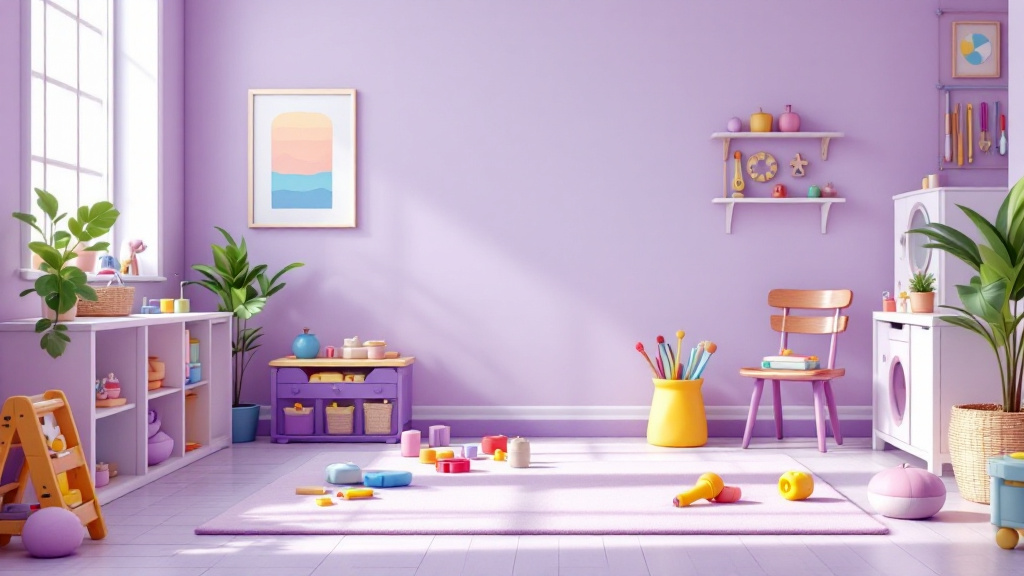The Importance of Structure in Home Learning
In the current educational landscape, creating a structured learning environment at home is paramount to support children's educational success. With many families adapting to virtual and hybrid learning models, understanding how to optimize the home for effective learning is crucial. This article provides insights and strategies for parents to create a supportive, structured, and tailored learning environment that caters to children's diverse learning needs and developmental stages.
Designing the Ideal Home Learning Environment

How do you create a home learning environment?
To create a home learning environment, it's essential to establish a dedicated workspace that is both spacious and organized. Here are some key elements to consider:
Dedicated Learning Space
Ensure the workspace is free from distractions, using furniture like a desk or table that encourages focus. Ideally, this space should be separate from areas associated with leisure activities.Comfort and Functionality
Incorporate comfortable seating and well-placed storage solutions like bins or caddies to keep learning materials accessible. This will help children feel more in control and reduce clutter.Lighting for Concentration
Utilize adequate lighting, preferably natural light or blue-enriched LED bulbs, which positively influence mood and productivity. A well-lit environment enhances the ability to concentrate and engage with learning materials.Personalization of Space
Allowing children to personalize their learning area can significantly boost motivation and engagement. This can be done through the use of educational decorations or by incorporating their favorite colors and themes.Inviting Atmosphere
Creating a warm and inviting atmosphere can include elements like light background music and inspiring art. This not only makes the learning experience enjoyable but also encourages a positive mindset towards studying.
Implementing these elements contributes to a conducive home learning environment that supports children in their educational journey.
Creating a Stimulating Indoor Learning Environment

How do you create an indoor learning environment?
To create an effective indoor learning environment for young children, it’s important to foster spaces that stimulate their physical, cognitive, emotional, and social development. Incorporating hands-on activities is crucial; areas designated for imaginative play, crafting, and interactive learning can make education an engaging experience.
Use vibrant colors and thoughtful decorations that create a welcoming atmosphere. Different colors can evoke varying moods — bright hues can energize and inspire creativity, while softer shades can bring calmness, helping children focus during learning sessions.
Moreover, it’s essential to balance play and education. Maintain active play areas where children can explore freely, alongside quieter spaces dedicated to concentrated study. By ensuring that materials are flexible and diverse, you can promote creative use and exploration.
Additionally, having distinct activity centers within the learning environment promotes engagement through play-based learning while allowing opportunities for collaboration and independent exploration. Keeping the environment clutter-free enhances novelty and reduces distractions, paving the way for a fulfilling learning experience.
Key Elements of a Structured Learning Environment

How do you create a structured learning environment?
Creating a structured learning environment begins with minimizing distractions. Distractions can significantly disrupt students' focus, so it is crucial to establish designated learning spaces that are comfortable and free from interruptions. To help children concentrate better, ensure learning materials are organized and easily accessible, preventing frustration and unnecessary diversion.
Classroom arrangement
The physical arrangement of a classroom plays a key role in fostering an engaging learning atmosphere. Here are several strategies to optimize classroom layout:
| Strategy | Description | Benefits |
|---|---|---|
| Flexible seating | Arrange seating in semi-circles or small groups | Promotes collaboration and social interactions |
| Organized supply stations | Set up shelves and bins for materials | Minimizes disruption by making resources easily accessible |
| Clear pathways | Ensure smooth traffic flow | Reduces chaos and allows for ease of movement during activities |
Positive reinforcement
Implementing positive reinforcement is essential in a structured learning environment. Recognizing achievements, both big and small, boosts children's confidence and motivates them to engage more actively in their learning journey. Encouraging a culture of positive behaviors not only enhances student relationships but also supports academic progress, leading to a more fulfilling educational experience for everyone involved.
Components of a Productive Learning Environment
What are the components of a learning environment?
The components of a learning environment include the physical environment, psychological environment, and emotional environment. Each plays a crucial role in fostering a productive and engaging experience for learners.
Physical Components
The physical environment encompasses all tangible aspects of the space where learning occurs. This includes:
- Classroom design and layout: Arranging furniture to promote interaction and focus.
- Learning resources: Keeping educational materials organized and accessible, which minimizes distractions.
- Dedicated learning spaces: Creating specific areas for different activities can enhance productivity.
Psychological Safety
The psychological environment focuses on establishing a safe and inviting atmosphere. Key elements include:
- Encouragement of participation: Fostering an environment where students feel comfortable sharing ideas.
- Structured routines: Clearly defined schedules help reduce anxiety, allowing students to know what to expect, increasing their engagement.
Emotional Needs
Addressing students' emotional needs is essential:
- Emotional support: Creating a nurturing environment where students feel valued can boost their confidence and willingness to take risks.
- Positive reinforcement: Recognizing achievements encourages persistence and effort in learning tasks.
Together, these components significantly influence students' overall learning experiences, helping them thrive academically and emotionally.
Personalizing a Learning Environment for Individual Needs

How do you create a personal learning environment?
To create an effective personal learning environment (PLE), the first step is to establish specific learning areas tailored to the learner's individual study habits. Observing whether a child prefers a tactile, auditory, or visual approach helps inform how these areas should be set up.
Next, define clear objectives that align with both educational and personal growth goals. These objectives guide the focus of learning and ensure a purpose is present in each activity.
Tools and Objectives
Identify which tools and resources will best support these objectives. This can include:
- Educational Toys: Enhance creativity and promote hands-on learning.
- Books: A variety of age-appropriate reading materials can foster a love for reading and enhance vocabulary skills.
- Technology: Implement devices like tablets or laptops, alongside tools such as educational apps and websites.
Visual Maps
Creating a visual map of your learning environment can provide a comprehensive overview of the objectives, tools, and general layout. Diagramming the space allows for easier adjustments and helps ensure that the environment remains conducive to learning. It also fosters a sense of organization, enabling children to better navigate their learning spaces and utilize the resources effectively.
The Role of Routines and Security in Learning
Establishing Routines
Creating daily routines is essential for supporting children's learning and behavior. A structured approach instills a sense of security, allowing kids to know what to expect each day. This predictability can significantly enhance their focus, enabling them to concentrate more effectively on their studies.
Minimizing Anxiety
Routines can also serve to reduce anxiety in children. By following a consistent schedule, children can manage expectations and feel more secure, which leads to better behavior and engagement in academic activities. A well-defined routine can alleviate feelings of overwhelm when faced with multiple tasks, promoting a smooth learning experience.
Predictability of Daily Activities
The predictability that comes with established routines fosters an environment where children thrive. Knowing the sequence of daily activities helps students transition smoothly between tasks, reducing disruptive behaviors. This consistent structure not only supports mental well-being but also contributes to their overall academic success.
Supporting Independence in Learning at Home
Age-Appropriate Responsibilities
Encouraging children to take on responsibilities suited to their age not only fosters independence but also helps them to develop crucial life skills. For instance, younger children can assist with simple tasks like sorting laundry or feeding pets, while older children might manage homework schedules or make their own snacks.
Encouraging Self-Reliance
Allowing children to make choices in their learning and daily activities is vital. Providing opportunities for children to tackle tasks independently, whether it’s organizing their study area or deciding what book to read, can significantly enhance their self-reliance. This autonomy helps them learn critical problem-solving skills and boosts their self-esteem.
Promoting Confidence
Supporting a child’s independence directly correlates with their confidence. When children successfully navigate tasks on their own, it reinforces their belief in their abilities. Celebrating small achievements along the way, like completing a project without help, strengthens their motivation and willingness to face new challenges.
| Topic | Details |
|---|---|
| Age-appropriate responsibilities | Tasks suitable for the child’s developmental stage |
| Encouraging self-reliance | Allowing children to make choices and handle tasks independently |
| Promoting confidence | Celebrating successes to boost self-esteem and motivation |
Emotional Support and Positive Reinforcement

Providing Love and Attention
Creating a nurturing home environment is essential for children to thrive academically and emotionally. Providing consistent love and attention cultivates a sense of security, encouraging children to engage fully in their learning activities. This emotional support not only motivates them but also helps in developing resilience against challenges they may face in their educational journey.
Celebrating Achievements
Recognizing and celebrating achievements, whether big or small, significantly impacts a child’s motivation. By acknowledging their hard work and progress, parents can boost their child’s confidence and enthusiasm for learning. Simple celebrations, like a family shout-out or a small treat, reinforce positive behaviors and achievements, creating a culture of encouragement at home.
Fostering a Growth Mindset
Encouraging a growth mindset allows children to view challenges as opportunities for learning and growth. This approach helps them to embrace setbacks, understand that effort leads to progress, and appreciate the learning process itself. Parents can model this mindset by discussing their own challenges and successes, showing children the value of persistence and resilience.
Integrating Real-Life Learning Experiences
Connecting Learning to Daily Life
Integrating learning into everyday activities can transform mundane chores into rich educational experiences. For example, cooking together not only teaches children about measurement but also enhances their understanding of math and science. By discussing ingredients and cooking techniques, children develop vocabulary and literacy skills in a context that feels relevant and engaging.
Meaningful Experiences
Including children in daily routines, like grocery shopping or gardening, fosters a sense of responsibility. These activities present opportunities for real-world problem solving, such as budgeting or understanding the growth cycle of plants, teaching them practical skills that apply beyond school.
Practical Skills Development
Hands-on experiences, such as household chores, build independence and support learning in a tangible way. By guiding children through these tasks, parents instill life skills while encouraging critical thinking and collaboration. This approach enhances learning outcomes and fosters a love for hands-on activities, ultimately empowering children to face future challenges.
Building a Foundation for Lifelong Learning
Creating a structured learning environment at home not only supports academic success but also fosters a love for learning and independence in children. By incorporating thoughtful design, consistent routines, and emotional support, parents can create an enriching environment that engages children, meets their individual needs, and prepares them for future educational challenges. A well-structured home learning environment lays the groundwork for lifelong curiosity and resilience, equipping children to thrive in any learning scenario they encounter.
References
- 8 tips on how to create a positive learning environment at home
- Page 6: Create a Structured Classroom - IRIS Center - Vanderbilt
- 7 Tips to Help You Create a Home Learning Space for Your Family
- Creating a Learning Environment in Your Home - Power Homeschool
- Create a Supportive At-Home Learning Environment
- At Home Learning Environment - Children's Discovery Center
- Creating a Positive Learning Environment at Home - 21K School
- Create a Productive Learning Environment at Home - Mobile Guardian




































































































